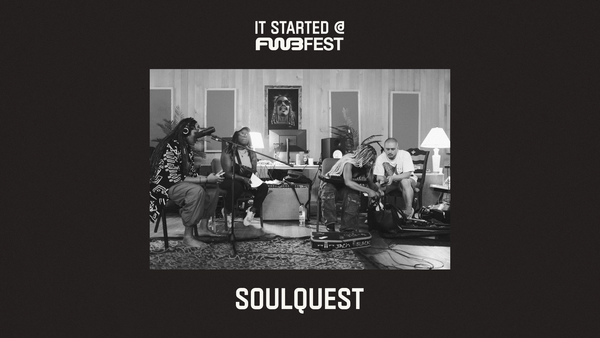- Ariel LeBeau
- Austin Robey
- David Blumenstein
- David Ehrlichman
- David Kerr
- Devon Moore
- Dexter Tortoriello
- Drew Coffman
- Drew Millard
- Eileen Isagon Skyers
- FWB Staff
- Greg Bresnitz
- Greta Rainbow
- Ian Rogers
- Jessica Klein
- Jose Mejia
- Kelani Nichole
- Kelsie Nabben
- Kevin Munger
- Khalila Douze
- Kinjal Shah
- Lindsay Howard
- Maelstrom
- Marc Moglen
- Marvin Lin
- Mary Carreon
- Matt Newberg
- Mike Pearl
- Moyosore Briggs
- Nicole Froio
- Ruby Justice Thelot
- Simon Hudson
- Steph Alinsug
- The Blockchain Socialist
- Willa Köerner
- Yana Sosnovskaya
- Yancey Strickler
- iz

Thu Feb 03 2022
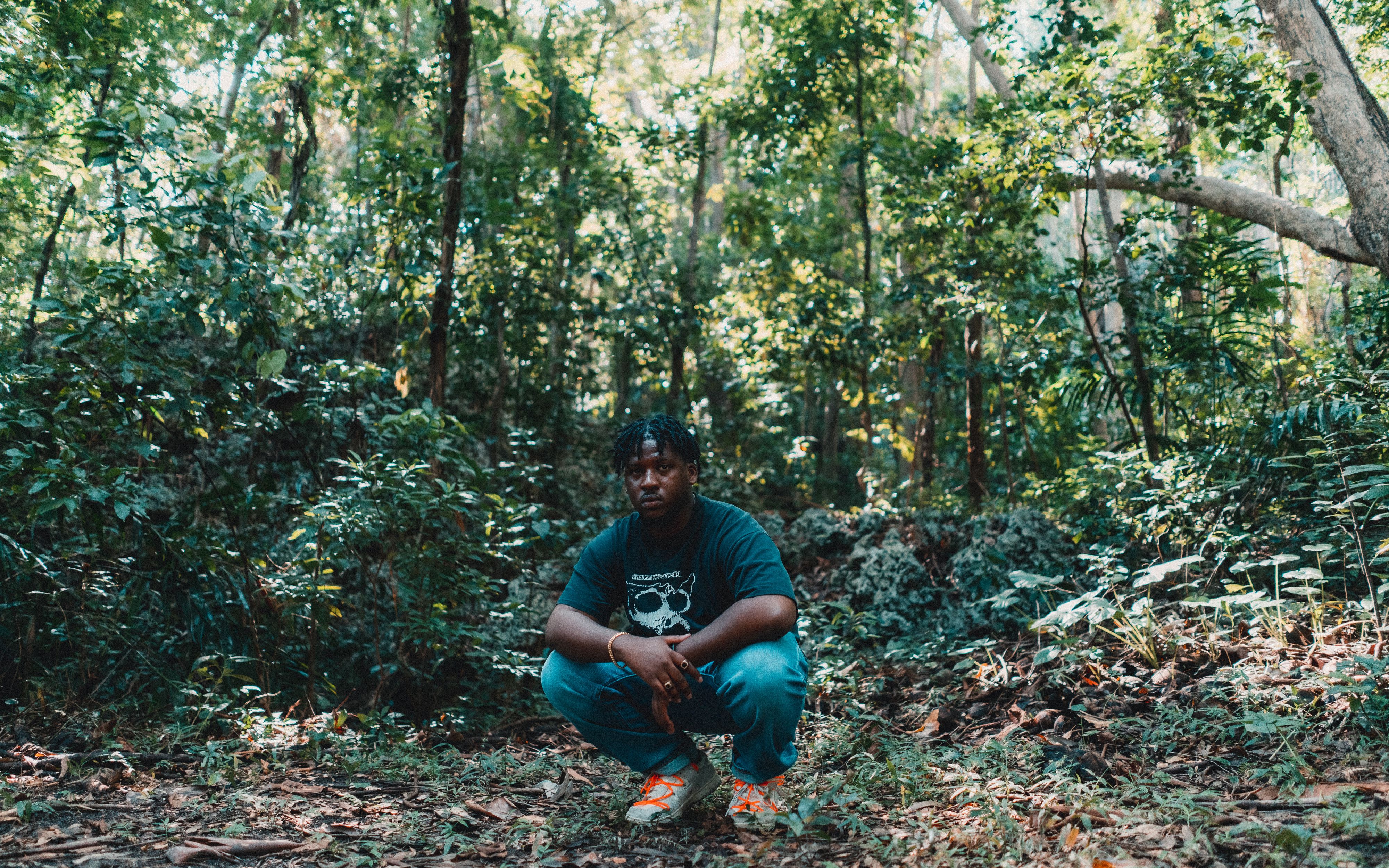
There’s a restaurant on a street corner in Miami’s Little Haiti neighborhood that’s beloved for its authentic Haitian and Caribbean dishes and vegan selections. Aside from its delicious legume and jerk chicken, one of Naomi’s Garden’s main attractions is its lush back patio, where palm fronds sway and rooster crows soundtrack a cozy dining experience. Locals say it reminds them of life back home in the Caribbean. On a balmy evening in December, a bouncer turned my family away from the entrance, explaining they were only doing takeout orders for the night. There was a “private crypto event” happening on the patio, they said — guest list required.
The city’s Art Basel festivities were underway, and throughout the week, it was becoming clear that the 2021 NFT boom had a grip over the annual conference. Inside the Miami Beach Convention Center, guests meandered through an educational presentation on the Tezos blockchain and minted their own NFTs; major auction house Christie’s partnered with nftnow to host “The Gateway,” an exhibition of NFT art and collectibles from the scene’s top creators; and one of Basel’s biggest art shows, SCOPE, sold limited-edition NFTs for VIP entry. Meanwhile, organizers and artist collectives pointed to the growing displacement of working-class, and notably Black and brown, communities in areas like Little Haiti, as the city transforms into a mecca for alt-finance and tech.
Bajan rapper-producer Haleek Maul was one of the artists in town, booked to perform at former MLB player Micah Johnson’s “Aku World,” a three-day immersive experience celebrating a Black NFT astronaut figure he created. His presence on the scene was hardly a surprise: After years of releasing haunting, energetic rap music bridging experimental electronic and patois-inflected horrorcore, Haleek has become an emblematic success story of an independent artist crossing over from the traditional music industry to Web3, using online auction-houses like Zora and Catalog to mint everything from original music, to graphic art and animations — and netting hundreds of thousands of dollars in the process

As Haleek tells it, though, his interest in crypto extends far beyond its role as an engine for his career. Contrary to the space’s reputation as a playground for the privileged, the artist is on a mission to empower artists and young people from his native Barbados to adopt a blockchain-based approach to creating. Accordingly, he was in Miami to host the first official IRL meetup for HOLDERSLAND, a community of artists, creators, and Web3 enthusiasts in the Caribbean and across the diaspora that he started in 2020 and launched a Discord group in April of last year. “HOLDERSLAND is basically a creative engine for people that are in the region and the diaspora,” Haleek said of the organization, which he sees as part educational resource, part grant-making arts and tech institution, and part mutual support network. “The whole plan is to build infrastructure around arts, technology, and digital property.”
When we speak the week after Basel, Haleek is back in Barbados and in high spirits. He’s eager to demonstrate his technical grasp of token-based models, using a metaphor that imagines blockchain protocols as planets and tokens as their moons. Mid-phone call, he acquires the $ENS domain khalila.eth and sends it to my wallet, granting me my very first NFT. It’s a party trick he also recently performed for Rajad Fenty, an early member and supporter of HOLDERSLAND who happens to be Rihanna’s brother.
Many in the music industry have condemned the emergence of NFTs as a dangerously speculative bubble, citing the environmental toll of Ethereum mining, the system’s association with libertarian ideology, and a misleading narrative of its emancipatory potential. There are indeed a number of barriers to entry in the NFT space: the space is overwhelmingly white and male, and gas fees currently require a significant upfront investment before an artist can even sell an NFT. And yet, Haleek Maul, a Black Caribbean artist, remains optimistic about blockchain technology, pointing to a radical, utopian future where, instead of being beholden to wealthy institutions and corporations, artists can empower themselves and invest in each other. “[I’m] talking about building community wealth with others,” he said.
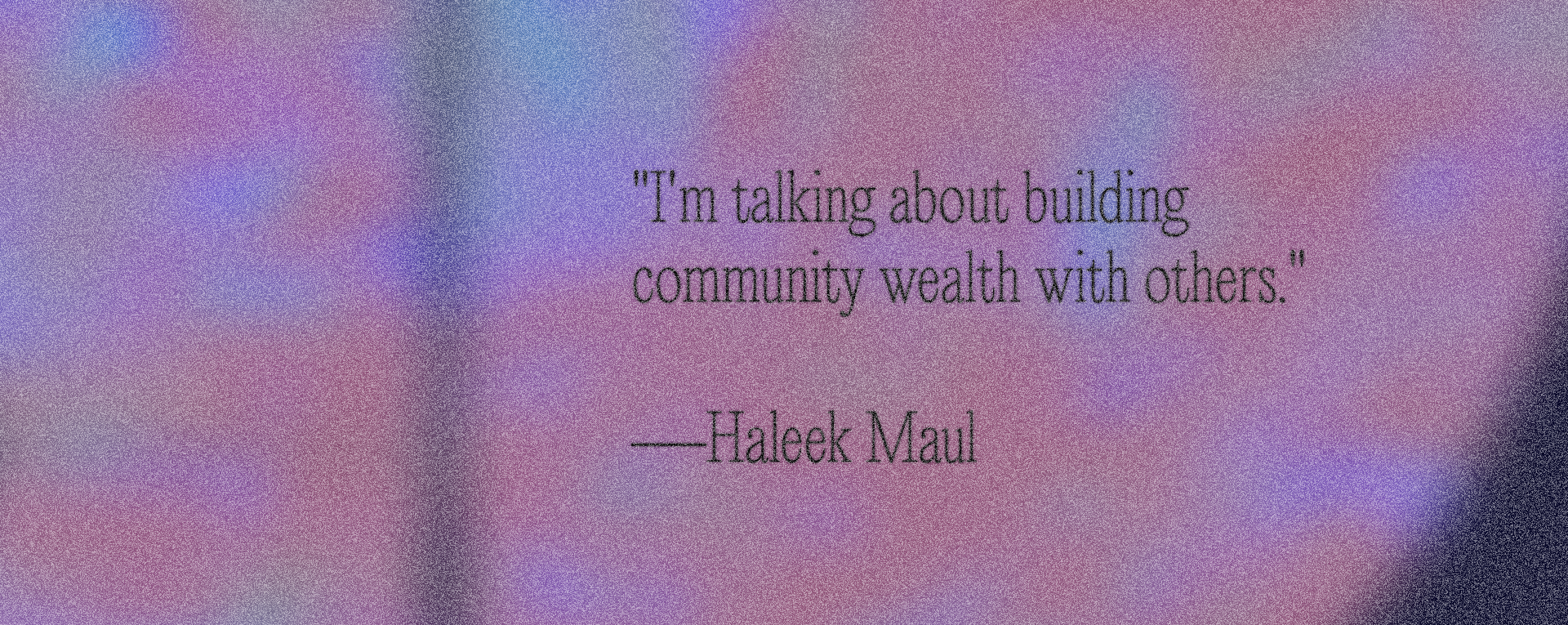
In a highly exploitative music streaming economy, where 90 percent of streams are going to the top 1 percent of artists, it’s no surprise that so many artists are turning to NFTs. Haleek knows this struggle intimately after “being kicked around by the music industry and politics and people that just didn’t fully understand my culture and me as a person,” he said, hinting at label deals that have come and gone, and the growing realization that years of releasing music and gaining critical attention was no guarantee of financial stability. “If I came into [the crypto space] with only good experiences or no experience at all, I’d be not really prepared for the work to be done,” he said.
He said that he started dipping his toe into the world of cryptocurrency and blockchain after a good friend tipped him off to it in 2014, around the time he began working on Price Midas, a lyrically hard-hitting and sonically expansive mixtape that crystallized his influence in underground music circles. Haleek spent time following the space, Ethereum specifically, and learned how to code smart contracts using the programming language Solidity.
His first milestone came in September of last year, via a collaboration with Urbit where he designed a collection of 10 art NFTs, each based on an existing star or planet within Urbit’s ecosystem of IDs. Dedicated to raising funds for HOLDERSLAND, the collaboration coincided with the unveiling of a logo refresh by popular designer, NFT artist, and FWB member Eric Hu. Haleek says the project netted 45 ETH, roughly $153,540 at the time, in 24 hours. He followed with five NFT tracks on Catalog—two of which he sold through PartyBid, a tool that allows multiple people to pool capital and split ownership.
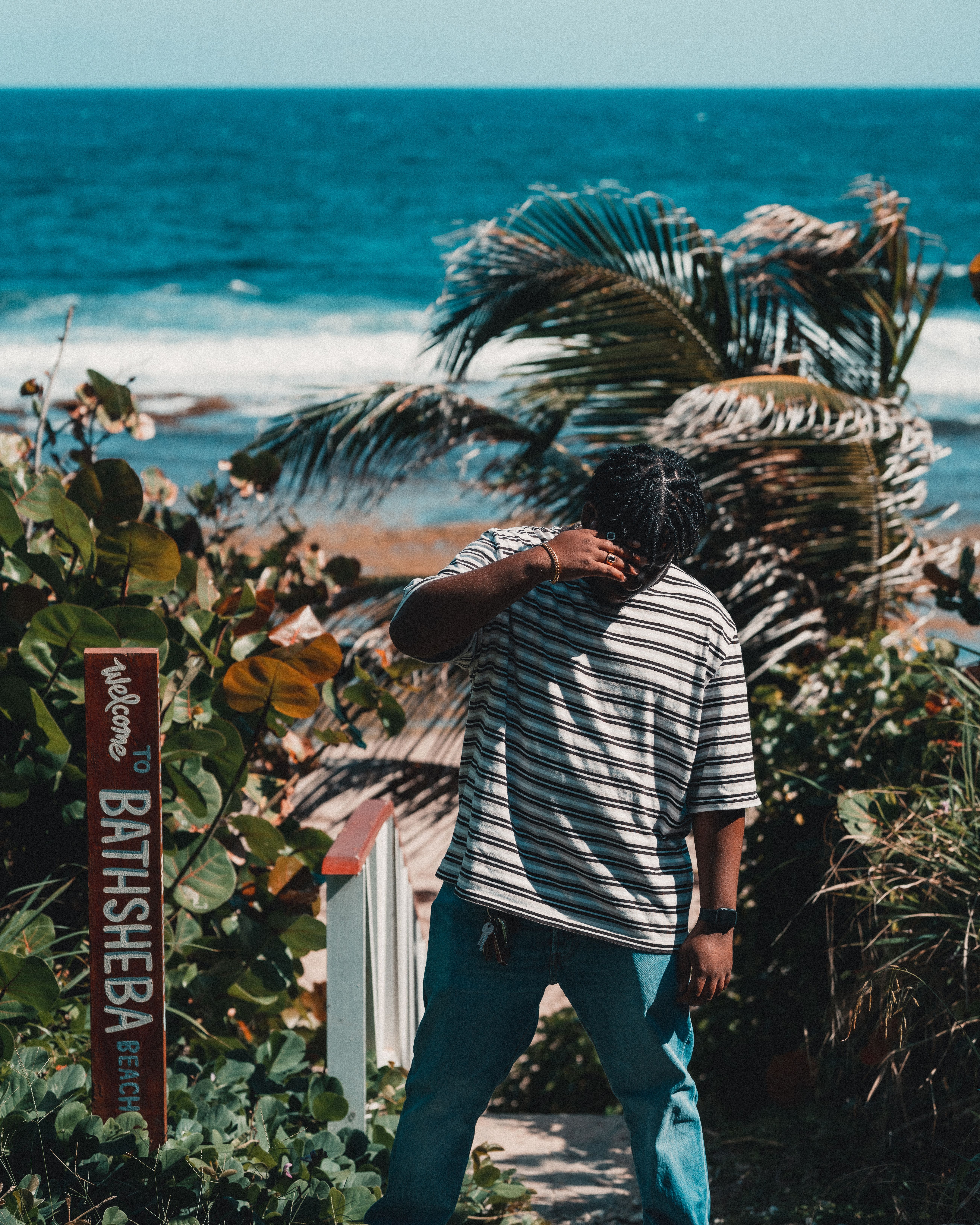
For Haleek, culture is foundational to crypto’s long-term success. He cites FWB’s club events, featuring artists like Suzi Analogue, Omar-S, and Azealia Banks, as an example of music’s power to draw more people into the space. “There’s a reason why NFTs were the thing to make crypto work,” Haleek says.” “For a lot of people, life is not about money. Money is something that’s been forced on us as an aspect of the sustenance that we need to survive, [but] we have to be mindful of the fact that the only true essence of life is the experiences we have.”
At this early stage, HOLDERLAND is a primarily virtual community that congregates on Discord and Twitter, though it has plans to become a DAO in the future. So far, HOLDERSLAND has already supported four artists in minting NFTs — including Bajan artist and designer Zoe Osborne and queer Bajan creator Délyt — in addition to investing in their collections. It also has plans to open a brick-and-mortar space: Haleek is investing a portion of proceeds from his NFT sales in building out a HOLDERSLAND creative headquarters in Barbados. “It’s a 360 multimedia studio,” he said. “Say you don’t have a really fast computer at home, kids can come there and work.”
When he started telling people about it, Haleek said he encountered hesitation about HOLDERSLAND from both sides—crypto natives not understanding the importance of enriching the space with diversity in culture, and people at home in Barbados thinking he was trying to scam them. “Now, considering the success of the whole design collab as well as Catalog’s success, people trust that I’m here to build and make things happen,” he said. “Kids are seeing an example of someone that’s actually being successful, so now they want to join the Discord.” To his point, it’s worth noting that Rihanna herself attended a HOLDERSLAND event in Barbados last year.
With its focus on uniting and empowering Caribbean and Afro-diasporic artists, HOLDERSLAND is undoubtedly a leader in the Web3 space when it comes to fostering a diversity of voices and aligning crypto with social and racial justice values. But it’s also one of the first and most exciting experiments of its kind in the Caribbean, where local policymakers are exploring how communities might leverage blockchain to create new avenues of economic opportunity.
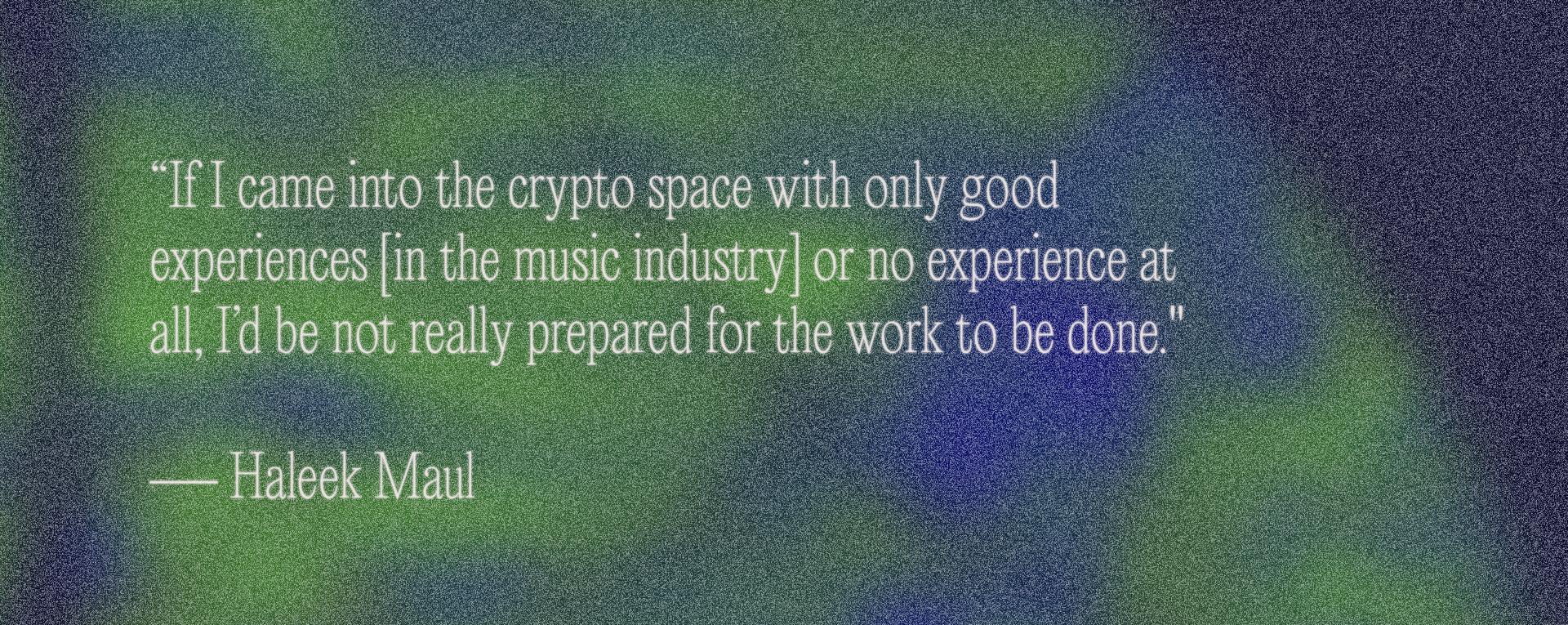
“The Bahamas, Barbados, and Bermuda have been very embracing of the space,” says Stefen Deleveaux, President of the Caribbean Blockchain Alliance, an organization that liaises with government officials and universities to aid in blockchain policy initiatives and education within the Caribbean. Deleveaux explained that all three countries have passed legislation that incentivizes crypto and blockchain companies to do business there, pointing to crypto exchange FTX’s recent move from Hong Kong to the Bahamas. Part of the draw, Deleveaux said, comes down to economic infrastructure.
“In the U.S., if you want to make payments to somebody, it’s simple: you use Venmo, Cash App, that kind of thing,” Deleveaux said. There are few alternatives in countries like The Bahamas or Barbados, where, due to high fees, long transfer times, and red-tape around electronic payment options, it is “slowly becoming harder to transact and transmit,” Haleek said. This effectively leaves a large population of people out of a growing internet-based transaction system, Deleveaux said, making a strong case for why blockchain-based funding channels may be necessary in the Caribbean and global South. Deleveaux cites friends in places like Kenya, who have completely abandoned their own currency and rely solely on crypto.
Especially in countries with fewer economic opportunities for artists, crypto and NFTs can provide an alternative revenue stream. Still, the question remains of whether or not alt-finance can speak meaningfully to and with indigenous, Afro-diasporic economic and sociopolitical realities as a whole. Even Joseph Lubin, co-founder of the Ethereum blockchain, has echoed these concerns, writing in a joint paper with Mally Anderson and Bobbi Thomason that the problems that blockchain projects are “trying to solve are very different from those faced by vulnerable populations, where access and inclusion usually are far from guaranteed, information asymmetry is rampant, and power dynamics are uneven.”

Though they understand the worries, Haleek and Deleveaux have certainly noticed that a lot of crypto detractors in the U.S. are either white or much more financially comfortable than the people they know who directly benefit from crypto every day. “In general, it's like people who are, in comparison to the rest of the world, very privileged, who don't have any kind of issues with payments or getting their work out there per se, or even just living in a system where they may be under some kind of oppression from the government or from police,” Deleveaux said. To his point, in two 2021 Harris polls, 23 percent of Black Americans surveyed and 17 percent of Hispanic Americans said they owned cryptocurrency, compared with 11 percent of white Americans.
Haleek Maul’s vision for HOLDERSLAND is one that underscores Web3 as a site of possibility, rather than a perfect solution. "One of the big things that happens is [when] people get pushback all their lives, they eventually get stuck, and don't explore what's possible,” Deleveaux said. “I think HOLDERSLAND could really show people what's possible." By that measure, what Haleek and the HOLDERSLAND community, as Black and brown and historically marginalized creators, desire to bring to fruition deserves to be reckoned with, no matter the contradictions. As tech writer Anna Wiener wrote in a recent, notably skeptical exploration of money in the metaverse for the New Yorker: “I think it is useful, in attempts to forecast the future, to be humble about the enormous mystery of other people’s desires.”
Wherever it goes, the crypto sphere will inevitably be a reflection of the wider world around it, including its dynamics of power. For now, after years of feeling adrift in the traditional music industry, Haleek feels like he’s finally found his footing. He is currently working on a new music video for his song “Verified,” financed with $650,000 in crowdfunding he raised through a recent NFT collaboration with the new Web3 platform, DoomsdayX. And aside from striving to make classic records and play meaningful stages, Haleek says his biggest priority is to continue to build genuine and mutually beneficial relationships with like-minded artists and thinkers.
“It's not a joke [to me],” he said about his love for the community he’s found over the past few years. “I really feel these things for these people. I would not be doing any of this if I didn't.”
Khalila Douze is a writer, creative consultant, and tarot card reader based in Chicago. Her work has appeared in Cultured Mag, Vogue, Dazed, i-D, and more.
Photos by Alexander James.
Graphics by Fiona Carty.

